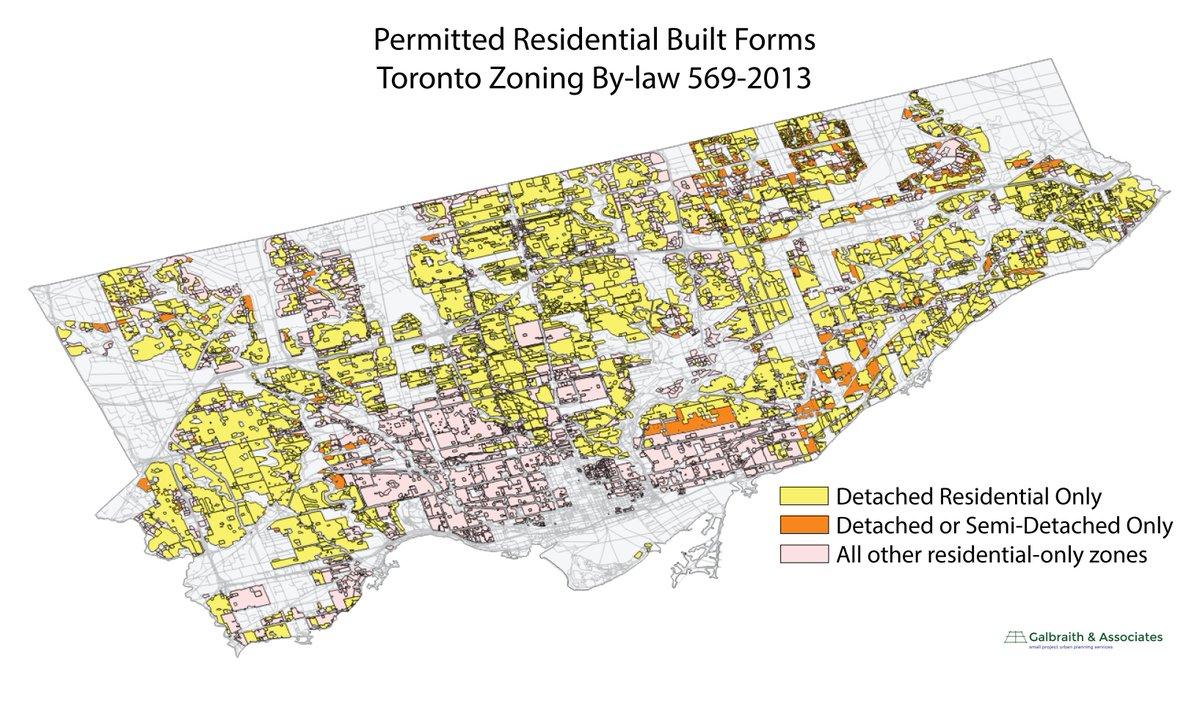AlvinofDiaspar
Moderator
Oy vey! This again!
I am hardly the only one raising this issue:
Sean Galbraith @PlannerSean
I was curious where in Toronto you’re only allowed to build a single-detached home, so I made a map. Yellow= no #gentledensity #topoli
https://twitter.com/PlannerSean/status/792909043450912768
---
This is an issue of fairness as to where developmental pressures are allowed to build.
AoD






